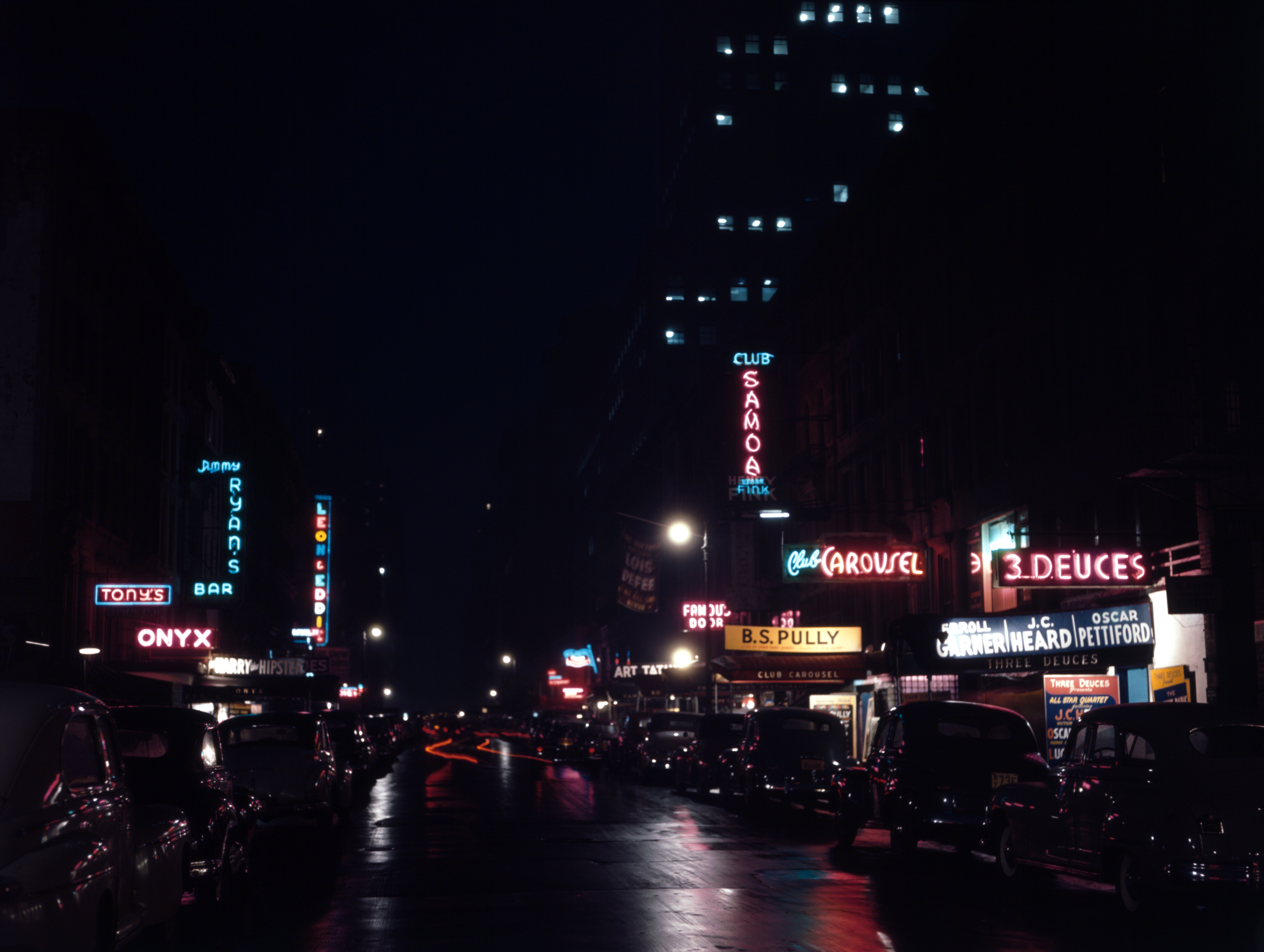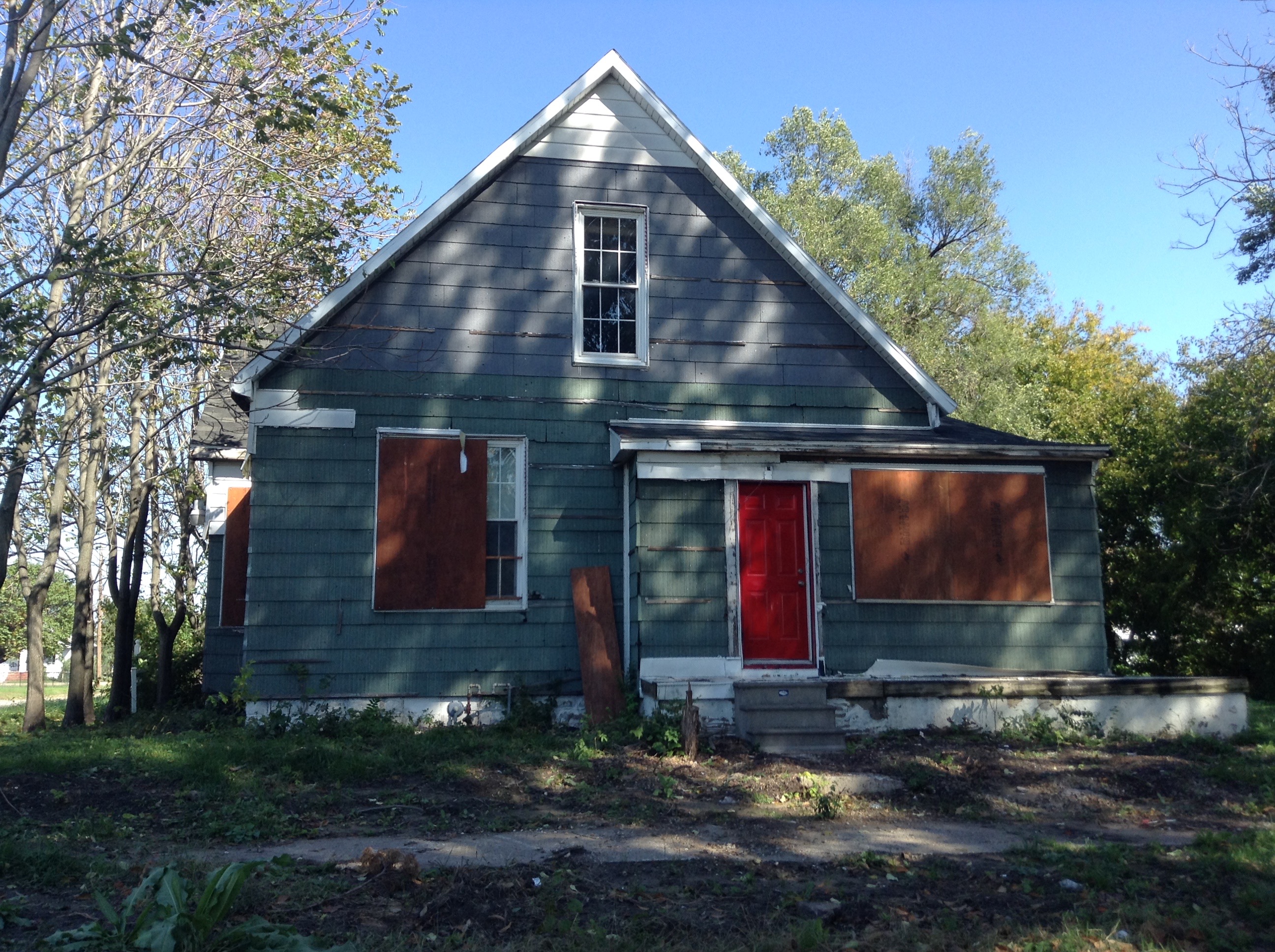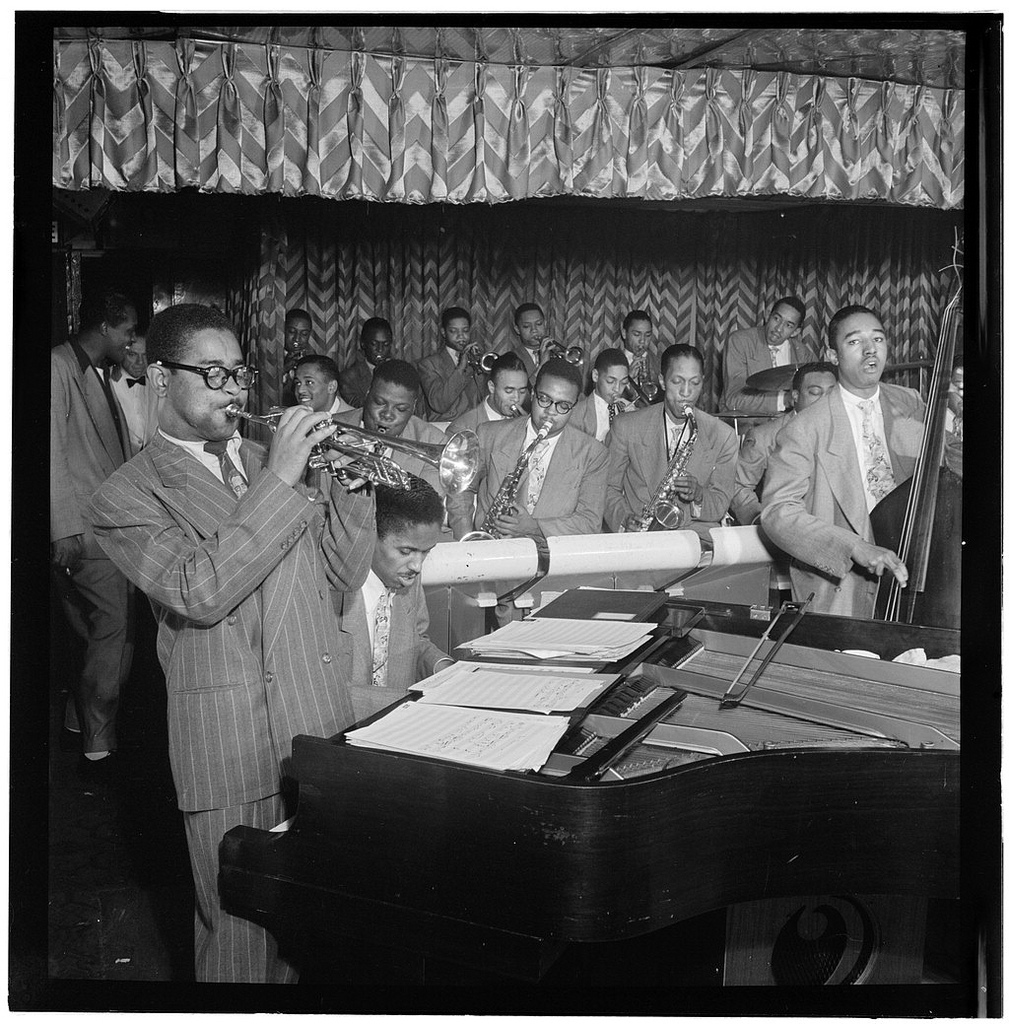|
Now's The Time (composition)
"Now's the Time" is a composition by Charlie Parker. He led the first recording of it, on November 26, 1945. Background and composition "Although Parker was capable of writing intricate bebop melody lines, he sometimes stepped back from his more progressive leanings and drew on his Kansas City jazz roots in crafting simpler, bluesier compositions – of which 'Now's the Time' is a case in point." It is a riff-based blues, with typical bebop phrase endings at the end of bars 5 and 6.Priestley, Brian (2005) ''Chasin' the Bird''. Equinox. pp. 50, 209. Original recording "Now's the Time" was first recorded on November 26, 1945, by Charlie Parker's Reboppers: Parker (alto sax), Miles Davis (trumpet), Dizzy Gillespie or Sadik Hakim (piano), Curley Russell (bass), and Max Roach (drums)."Charlie Parker – Complete Savoy & Dial Sessions" (CD liner notes). Definitive Records. DRCD 44402. Multiple takes were made; ''The Penguin Guide to Jazz'' suggests that "Parker's solo on the third take ... [...More Info...] [...Related Items...] OR: [Wikipedia] [Google] [Baidu] |
Charlie Parker
Charles Parker Jr. (August 29, 1920 – March 12, 1955), nicknamed "Bird" or "Yardbird", was an American jazz saxophonist, band leader and composer. Parker was a highly influential soloist and leading figure in the development of bebop, a form of jazz characterized by fast tempos, virtuosic technique, and advanced harmonies. Parker was an extremely brilliant virtuoso and introduced revolutionary rhythmic and harmonic ideas into jazz, including rapid passing chords, new variants of altered chords, and chord substitutions. Primarily a player of the alto saxophone, Parker's tone ranged from clean and penetrating to sweet and somber. Parker acquired the nickname "Yardbird" early in his career on the road with Jay McShann. This, and the shortened form "Bird", continued to be used for the rest of his life, inspiring the titles of a number of Parker compositions, such as "Yardbird Suite", "Ornithology", "Bird Gets the Worm", and "Bird of Paradise". Parker was an icon for the hipster ... [...More Info...] [...Related Items...] OR: [Wikipedia] [Google] [Baidu] |
Bebop
Bebop or bop is a style of jazz developed in the early-to-mid-1940s in the United States. The style features compositions characterized by a fast tempo, complex chord progressions with rapid chord changes and numerous changes of key, instrumental virtuosity, and improvisation based on a combination of harmonic structure, the use of scales and occasional references to the melody. Bebop developed as the younger generation of jazz musicians expanded the creative possibilities of jazz beyond the popular, dance-oriented swing music-style with a new "musician's music" that was not as danceable and demanded close listening.Lott, Eric. Double V, Double-Time: Bebop's Politics of Style. Callaloo, No. 36 (Summer, 1988), pp. 597–605 As bebop was not intended for dancing, it enabled the musicians to play at faster tempos. Bebop musicians explored advanced harmonies, complex syncopation, altered chords, extended chords, chord substitutions, asymmetrical phrasing, and intricate melodi ... [...More Info...] [...Related Items...] OR: [Wikipedia] [Google] [Baidu] |
Miles Davis
Miles Dewey Davis III (May 26, 1926September 28, 1991) was an American trumpeter, bandleader, and composer. He is among the most influential and acclaimed figures in the history of jazz and 20th-century music. Davis adopted a variety of musical directions in a five-decade career that kept him at the forefront of many major stylistic developments in jazz. Born in Alton, Illinois, and raised in East St. Louis, Davis left to study at Juilliard in New York City, before dropping out and making his professional debut as a member of saxophonist Charlie Parker's bebop quintet from 1944 to 1948. Shortly after, he recorded the ''Birth of the Cool'' sessions for Capitol Records, which were instrumental to the development of cool jazz. In the early 1950s, Davis recorded some of the earliest hard bop music while on Prestige Records but did so haphazardly due to a heroin addiction. After a widely acclaimed comeback performance at the Newport Jazz Festival, he signed a long-term contract wi ... [...More Info...] [...Related Items...] OR: [Wikipedia] [Google] [Baidu] |
Dizzy Gillespie
John Birks "Dizzy" Gillespie (; October 21, 1917 – January 6, 1993) was an American jazz trumpeter, bandleader, composer, educator and singer. He was a trumpet virtuoso and improviser, building on the virtuosic style of Roy Eldridge but adding layers of harmonic and rhythmic complexity previously unheard in jazz. His combination of musicianship, showmanship, and wit made him a leading popularizer of the new music called bebop. His beret and horn-rimmed spectacles, scat singing, bent horn, pouched cheeks, and light-hearted personality provided one of bebop's most prominent symbols. In the 1940s, Gillespie, with Charlie Parker, became a major figure in the development of bebop and modern jazz. He taught and influenced many other musicians, including trumpeters Miles Davis, Jon Faddis, Fats Navarro, Clifford Brown, Arturo Sandoval, Lee Morgan, Chuck Mangione, and balladeer Johnny Hartman. He pioneered Afro-Cuban jazz and won several Grammy Awards. Scott Yanow wrote, "Dizzy ... [...More Info...] [...Related Items...] OR: [Wikipedia] [Google] [Baidu] |
Sadik Hakim
Sadik Hakim (born Forrest Argonne Thornton; July 15, 1919 – June 20, 1983) was an American jazz pianist and composer. Early life Forrest Argonne Thornton was born on July 15, 1919 in Duluth, Minnesota. The name Argonne came from the World War I battle. He was taught music by his grandfather and played locally before moving to Chicago. Later life and career In Chicago in 1944, Hakim was heard by the tenor saxophonist Ben Webster, who took him to New York to be the pianist in his band. He appeared on some Charlie Parker recordings for Savoy Records in the following year. He toured with another saxophonist, Lester Young from 1946 to 1948, including for recordings. He changed his name to Sadik Hakim, a Muslim formulation, in 1947. "In the 1950s Hakim played in Canada with Louis Metcalf, toured with James Moody (1951–4), and was a member of Buddy Tate's orchestra (1956–60)." Hakim's debut recording as a leader was in 1962, on an album for Charlie Parker Records that was sha ... [...More Info...] [...Related Items...] OR: [Wikipedia] [Google] [Baidu] |
Curley Russell
Dillon "Curley" Russell (19 March 1917 – 3 July 1986) was an American jazz musician, who played bass on many bebop recordings. He was born in New York, United States. He was nicknamed "Curley" for his curly hair. A member of the Tadd Dameron Sextet, he was in demand for his ability to play at the rapid tempos typical of bebop, and appears on several key recordings of the period. He left the music business in the late 1950s. On May 1, 1951, Russell played in the recording session for "Un Poco Loco", composed by American jazz pianist Bud Powell, with Max Roach on drums. Literary critic Harold Bloom included this performance on his short list of the greatest works of twentieth-century American art. According to jazz historian Phil Schaap, the classic bebop tune "Donna Lee", a contrafact on "Back Home Again in Indiana", was named after Curley's daughter. In 2002, she donated her father's bass to the Institute of Jazz Studies at Rutgers University. He died of emphysema at Quee ... [...More Info...] [...Related Items...] OR: [Wikipedia] [Google] [Baidu] |
Max Roach
Maxwell Lemuel Roach (January 10, 1924 – August 16, 2007) was an American jazz Jazz drumming, drummer and composer. A pioneer of bebop, he worked in many other styles of music, and is generally considered one of the most important drummers in history. He worked with many famous jazz musicians, including Clifford Brown, Coleman Hawkins, Dizzy Gillespie, Charlie Parker, Miles Davis, Duke Ellington, Thelonious Monk, Abbey Lincoln, Dinah Washington, Charles Mingus, Billy Eckstine, Stan Getz, Sonny Rollins, Eric Dolphy, and Booker Little. He was inducted into the ''DownBeat'' Hall of Fame in 1980 and the ''Modern Drummer'' Hall of Fame in 1992. In the mid-1950s, Roach co-led a pioneering quintet along with trumpeter Clifford Brown. In 1970, he founded the percussion ensemble M'Boom. He made numerous musical statements relating to the civil rights movement. Biography Early life and career Max Roach was born to Alphonse and Cressie Roach in the Township of Newland, Pasquotank County, ... [...More Info...] [...Related Items...] OR: [Wikipedia] [Google] [Baidu] |
The Hucklebuck
"The Hucklebuck" (sometimes written "The Huckle-Buck") is a jazz and R&B dance tune first popularized by Paul Williams and His Hucklebuckers in 1949. The composition of the tune was credited to Andy Gibson, and lyrics were later added by Roy Alfred. The song became a crossover hit and a dance craze, in many ways foreshadowing the popular success of rock and roll a few years later. It was successfully recorded by many other musicians including Lucky Millinder, Roy Milton, Tommy Dorsey, Frank Sinatra, Lionel Hampton, Louis Armstrong, Chubby Checker, Bo Diddley, Otis Redding, Quincy Jones, Canned Heat, Coast to Coast, Brendan Bowyer and Crystal Swing. Original recordings The tune, structured around a twelve-bar blues progression, was originally recorded by Paul Williams and his band, credited as His Hucklebuckers, in New York City, on December 15, 1948, with producer Teddy Reig. The composition was credited to Andy Gibson, and the recording was released by Savoy Records ... [...More Info...] [...Related Items...] OR: [Wikipedia] [Google] [Baidu] |
Paul Williams (saxophonist)
Paul "Hucklebuck" Williams (July 13, 1915 – September 14, 2002) was an American jazz and blues saxophonist, bandleader, and songwriter. His record " The Huckle-Buck", recorded in December 1948, was one of the most successful R&B records of the time. In his ''Honkers and Shouters'', Arnold Shaw credited Williams as one of the first to employ the honking tenor saxophone solo that became the hallmark of rhythm and blues and rock and roll in the 1950s and early 1960s. Biography Williams was born in Lewisburg, Tennessee, and grew up in Bowling Green, Kentucky, before moving with his parents to Detroit, Michigan, at the age of 13. He started learning saxophone and played in school bands before forming his own band, Paul Williams and his Kings of Rhythm, with the trumpeter Lloyd Henderson, in the mid-1930s, and playing in local clubs. The band split up during World War II, and Williams then joined Clarence Dorsey's band. He toured with the band, then known as the Sensational Six, ... [...More Info...] [...Related Items...] OR: [Wikipedia] [Google] [Baidu] |
Andy Gibson
Albert "Andy" Gibson (November 6, 1913 – February 11, 1961) was an American jazz trumpeter, arranger, and composer. Career Gibson played violin early on before settling on trumpet. Although he played professionally in many orchestras, he did not solo and worked more often as an arranger. His associations include Lew Redman (1931), Zack Whyte (1932–33), McKinney's Cotton Pickers (1934–35), Blanche Calloway, Willie Bryant, and Lucky Millinder. He quit playing in 1937 to arrange and compose full-time, working with Duke Ellington, Count Basie, Cab Calloway, Charlie Barnet, and Harry James. He led a big band while serving in the United States Army from 1942-45. After his discharge, he continued working with Barnet but focused primarily on R&B music. He was musical director for King Records from 1955–60 and recorded four songs as a leader in 1959 which were released by RCA Camden. He composed "I Left My Baby" (popularized by Count Basie), "The Great Lie", and "The Huckleb ... [...More Info...] [...Related Items...] OR: [Wikipedia] [Google] [Baidu] |
Lucky Millinder
Lucius Venable "Lucky" Millinder (August 8, 1910 – September 28, 1966) was an American swing and rhythm-and-blues bandleader. Although he could not read or write music, did not play an instrument and rarely sang, his showmanship and musical taste made his bands successful. His group was said to have been the greatest big band to play rhythm and blues, and gave work to a number of musicians who later became influential at the dawn of the rock and roll era. He was inducted into the Alabama Jazz Hall of Fame in 1986. Early career Millinder was born Lucius Venables in Anniston, Alabama, United States. He took the surname Millinder as a child, and was raised in Chicago. In the 1920s, he worked in clubs, ballrooms, and theatres in Chicago as a master of ceremonies and dancer. He first fronted a band in 1931 for an RKO theater tour, and in 1932 took over the leadership of Doc Crawford's orchestra in Harlem. He also freelanced elsewhere. In 1933, he took a band to Europe, playing re ... [...More Info...] [...Related Items...] OR: [Wikipedia] [Google] [Baidu] |
1940s Jazz Standards
Year 194 ( CXCIV) was a common year starting on Tuesday (link will display the full calendar) of the Julian calendar. At the time, it was known as the Year of the Consulship of Septimius and Septimius (or, less frequently, year 947 '' Ab urbe condita''). The denomination 194 for this year has been used since the early medieval period, when the Anno Domini calendar era became the prevalent method in Europe for naming years. Events By place Roman Empire * Emperor Septimius Severus and Decimus Clodius Septimius Albinus Caesar become Roman Consuls. * Battle of Issus: Septimius Severus marches with his army (12 legions) to Cilicia, and defeats Pescennius Niger, Roman governor of Syria. Pescennius retreats to Antioch, and is executed by Severus' troops. * Septimius Severus besieges Byzantium (194–196); the city walls suffer extensive damage. Asia * Battle of Yan Province: Warlords Cao Cao and Lü Bu fight for control over Yan Province; the battle lasts for over 1 ... [...More Info...] [...Related Items...] OR: [Wikipedia] [Google] [Baidu] |



